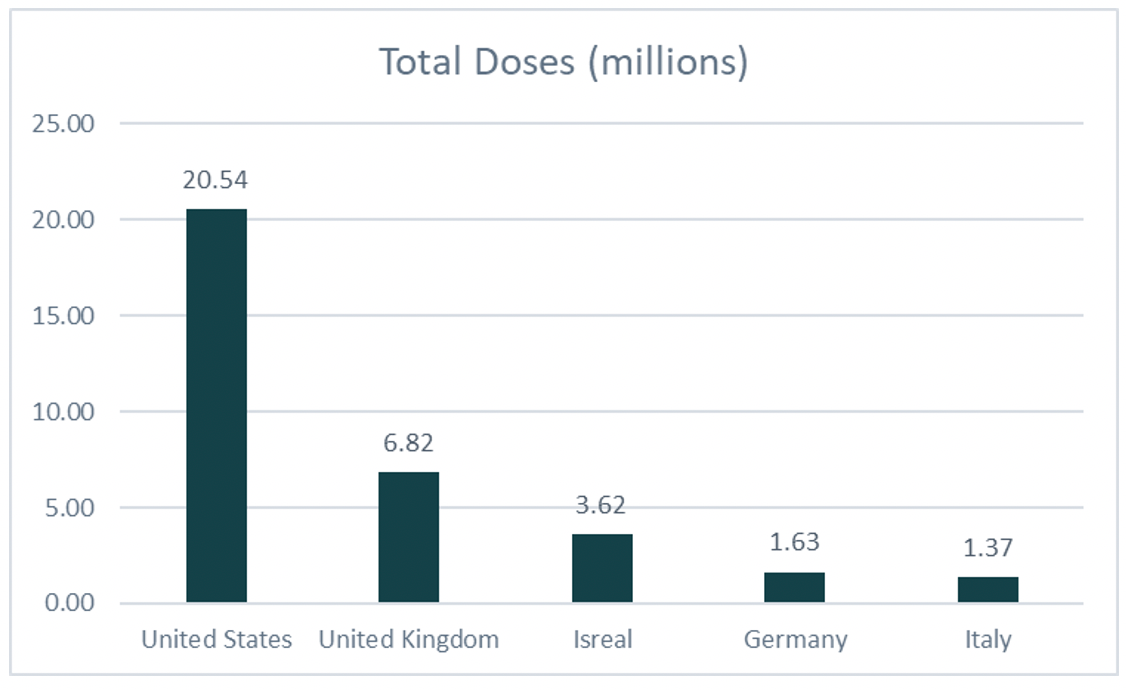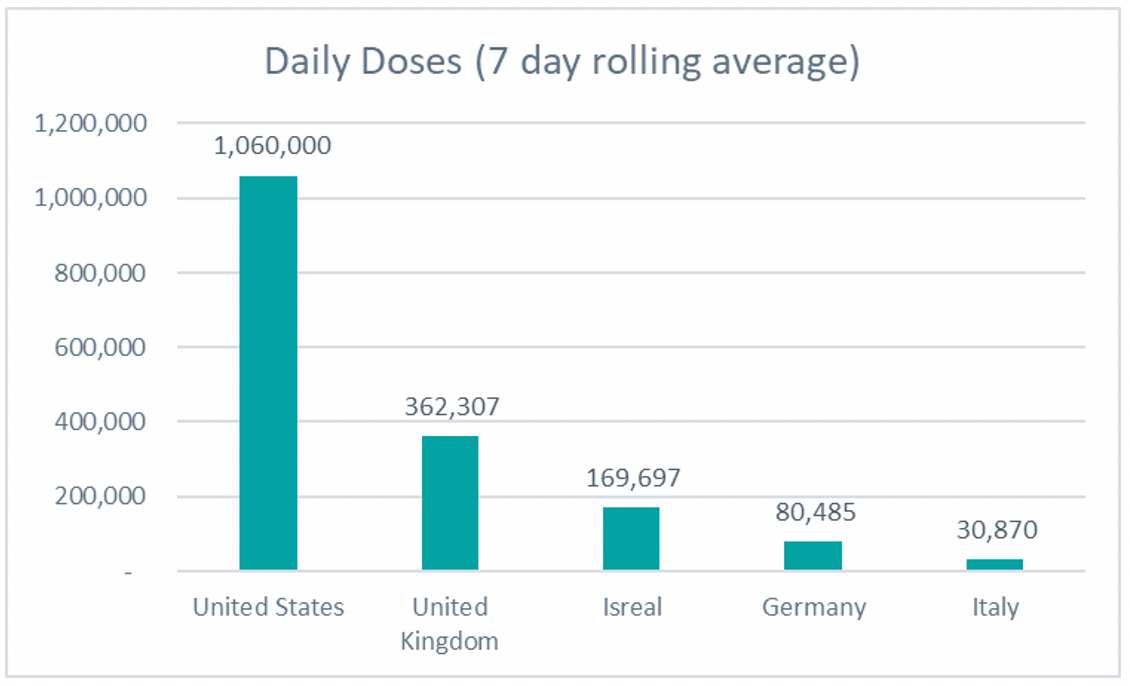COVID-19 Therapeutics and Vaccines Are Here: What All Companies Need to Do Next
The pharmaceutical industry must be prepared for the coming wave of COVID-related safety reports.
The pharmaceutical industry has made COVID-19 treatments and vaccines available with unprecedented—and inspiring—speed.Although this is cause for celebration from a public health perspective, the deployment of these new products will also bring a significant new challenge for all manufacturers: an unprecedented increase in the number of safety reports that could potentially accompany the use of these new products.It is easy to imagine how this will be the case for manufacturers of products specifically for COVID-19 given they are deployed with record speed.However, manufacturers of many other products also are likely to see a significant influx of safety reports, as the new medicines and vaccines may interact with existing diseases and medicines in unforeseen ways. Therefore, it is imperative that safety teams across all companies prepare for increased demands on pharmacovigilance and risk management systems across their portfolios.
Increasing pressure on safety systems
Typically, when a new medicine or vaccine is first approved, it is administered to relatively small populations, meaning the knowledge of factors that influence safety and efficacy in ‘real world use’ can be built up over time.That is not the case with COVID-19 vaccines, in this instance several governments around the world plan to vaccinate millions of people in the first few weeks following approval and 10’s of millions within a few months. In fact, over 25 million doses have been administered within 1 month of European & North American approval of the Pfizer/BioNTech and Moderna vaccines1 and 8 billion doses could be available by the end of 20212.
Figure 1: Total COVID-19 doses administered to 23 Jan 2021 (leading countries)

Figure 2: Daily COVID-19 doses administered to 23 Jan 2021 (leading countries)

The numbers of safety-related queries and reports that potentially can arise with all these vaccinations are orders of magnitude greater than the traditional capacity of manufacturer call centers.For example, in just the U.S. alone, if 2 million individuals are vaccinated daily and 1:1000 report a side effect, there would be approximately 2,000 individual adverse event reports per day and volumes will be further amplified by reports from other countries.
Whilst some adverse event reports may go to government websites, the FDA Adverse Event Reporting Systems (FAERS) shows that only 5% of reports in 2019 were made directly to the FAERS database3. This means the vast majority of adverse events are reported to the Market Authorization Holder (MAH) and this pattern is continuing with the COVID-19 medicines and vaccines. There are already early indications that consumer and HCP contacts with vaccine manufacturers are increasing through traditional routes; particularly company call centers4.
The current rapid rise in infection rates5 further compounds the situation, with staff illness placing additional strain on already stretched call centers and case management teams faced with a deluge of data requiring entry, coding, triage, case review and subsequent analysis.For some manufacturers this is their first ever product launch and it is one that requires immense scale from manufacturing, through distribution to inquiry handling and adverse event report collection.
The impact on all pharma companies
Pharmacovigilance teams across all companies should be assessing their systems for potential risk, for example where:
- the volume of reports related to COVID-19 vaccinations or medicines may overwhelm their reporting system (e.g. call center or affiliates)
- rising infection rate are likely to impact the effectiveness of the workforce
- the safety or efficacy of other products may be impacted by COVID-19 vaccinations or medicines
For example, new infections and the associated series of new medicines and vaccines present a large environmental change which may interact with existing medicines in ways that have not been anticipated.The COVID-19 disease, treatments, or vaccines may have an unexpected impact on people with background disease or medication, therefore all manufacturers should be alert to potential changes in the safety profiles for their products and proactively assess:
- is there evidence of a change in response due to COVID-19 infection?
- do COVID-19 treatments interact with existing medicines?
- do preexisting conditions/medicines impact COVID-19 vaccination (or vice versa)?
Pharmacovigilance and risk management plans must be developed and implemented to ensure data is collected to address both the known and the unknown risks of COVID-19 mass vaccination. Given the speed of roll-out this must be done proactively to ensure that the data is analyzed in real time and acted on quickly.
Delay in any of these steps can potentially expose other patients to unnecessary risks, cause harm to public health, damage company reputation and could lead to potential liability. It is therefore imperative that the pharmaceutical industry pre-empt the anticipated rise of adverse event reports in connection with reporting obligations as well as general risk analysis.
Staying ahead of the wave
The need to continually monitor the changing safety landscape at a time when traditional safety systems are under immense strain throws a new challenge for pharma. Many call centers are already struggling to operate at full capacity due to COVID-19 restrictions either because of staff sickness or because technology is unavailable to work effectively from home.
Therefore, pharmacovigilance teams must adapt their operations to decompress the systems and implement processes to increase efficiency. Many pharmacovigilance processes still use the principles of paper-based systems and largely remain siloed, manual, and time-consuming.
To improve the quality of data collected, streamline downstream processing, and help teams work more effectively pharma must implement proven and sustainable technology to:
- reduce reliance on manual entry, processing, and review
- guide data entry to ensure key information is captured at the first opportunity and reduce the need for follow up
- ensure data is made available in real-time to accelerate analysis and generate insights
By providing a simple and dynamic interface for the capture of information, technology can also facilitate direct reporting by patients and HCPs. This provides pharma more complete, accurate and timely data on which to base their assessments, reducing the burden on call centers and ensuring key information is captured first time so that arduous and often unsuccessful follow-up cycles can be avoided.Such a proactive approach creates a continuously improving cycle of knowledge - the known safety profile and side effects of a medication or vaccine are communicated to the public, then individuals report adverse events as they occur, enabling pharma to analyze the new information and update their communications accordingly - thus optimizing use and minimizing risk through continuously updated advice.
Conclusion
The principles of pharmacovigilance planning and risk management remain the same in all circumstances; proactively collect data, analyze it in real time, act on it quickly, and maintain full transparency with regulators. However, given the severity of the COVID-19 pandemic and the level of public scrutiny, the consequences of delay and lack of transparency are amplified for the entire industry.
The development and implementation of robust risk management strategies by all manufacturers – whether or not they have a COVID-19 portfolio - will help reduce regulatory challenges, product liability and instead provide a knowledge base to better equip pharma for the role out of the next vaccine as the virus evolves.
References
- Our World In Data - Coronavirus (COVID-19) Vaccinations
- On pins and needles: Will COVID-19 vaccines ‘save the world’?
- FDA Adverse Event Reporting Systems (FAERS) Public Dashboard
- CDC Vaccine Adverse Event Reporting System (VAERS)
- Our World In Data – Daily new confirmed COVID-19 cases per million people

Dr. Andrew Rut, CEO and founder, MyMeds&Me
Navigating Distrust: Pharma in the Age of Social Media
February 18th 2025Ian Baer, Founder and CEO of Sooth, discusses how the growing distrust in social media will impact industry marketing strategies and the relationships between pharmaceutical companies and the patients they aim to serve. He also explains dark social, how to combat misinformation, closing the trust gap, and more.
FDA Approves Opdivo Plus Yervoy Regimen for MSI-H/dMMR Colorectal Cancer
April 9th 2025Approval of the Opdivo plus Yervoy combination regimen was based on results from the Phase III CheckMate-8HW trial, which was the largest immunotherapy study in patients with previously untreated, unresectable, or metastatic microsatellite instability-high or mismatch repair deficient colorectal cancer.